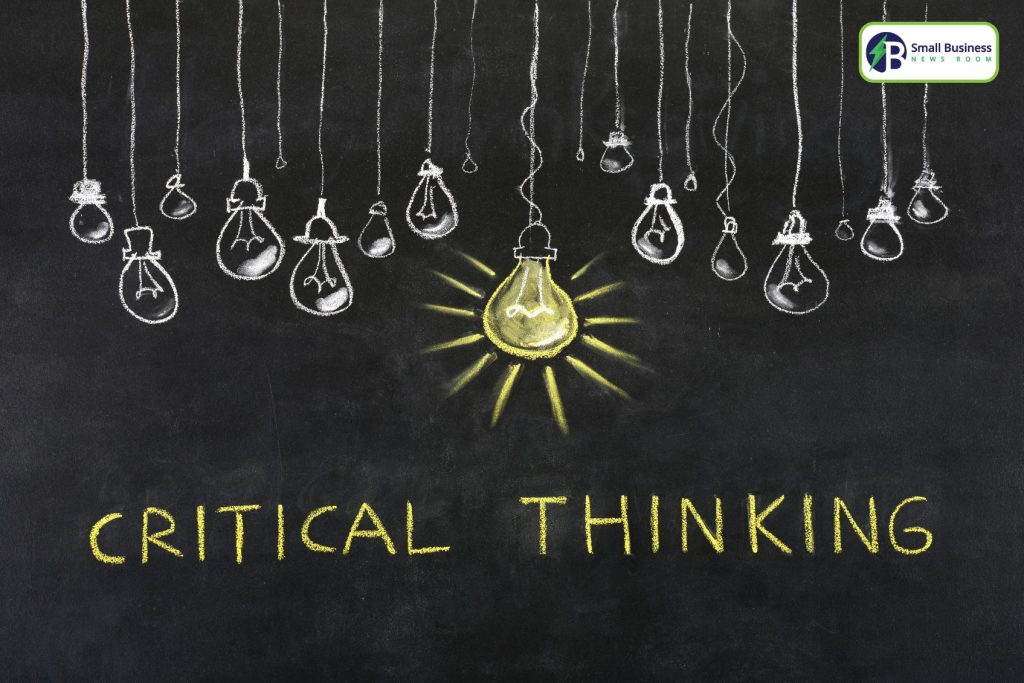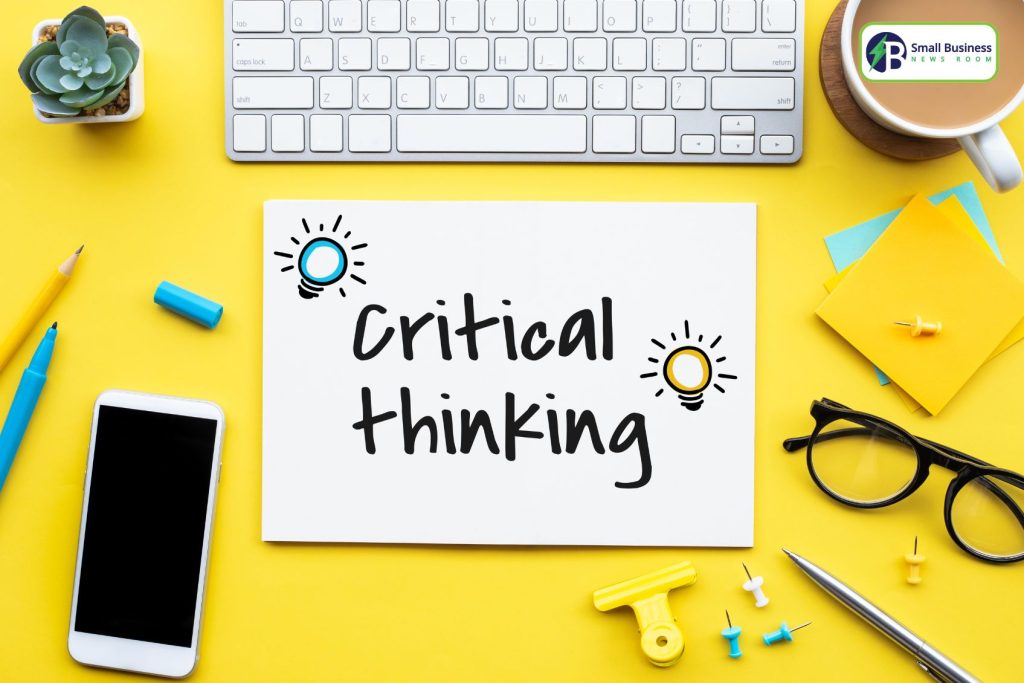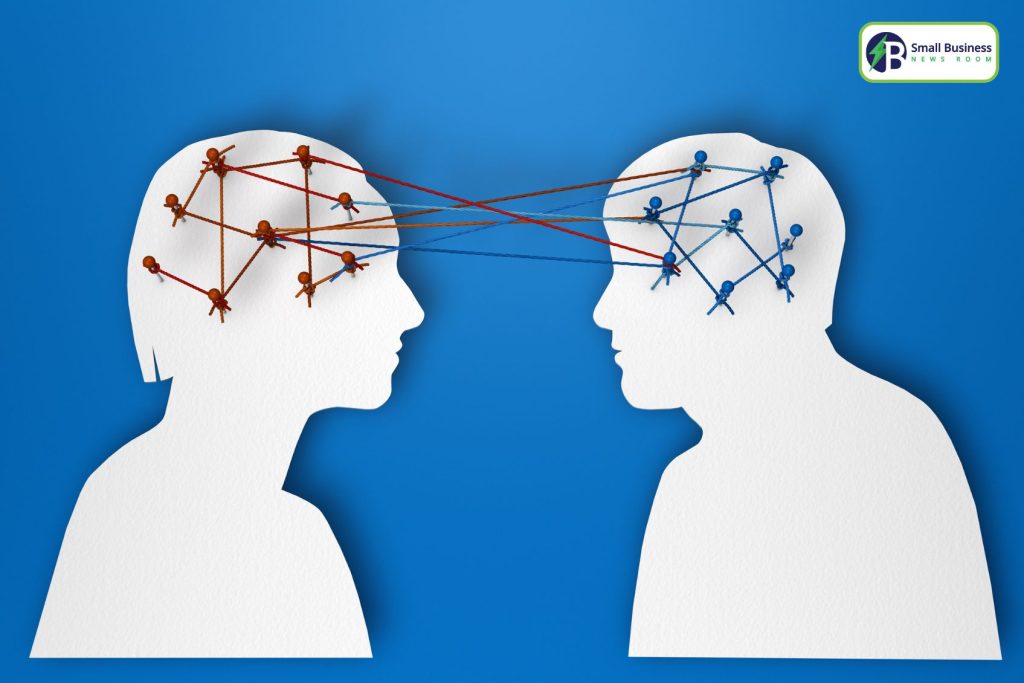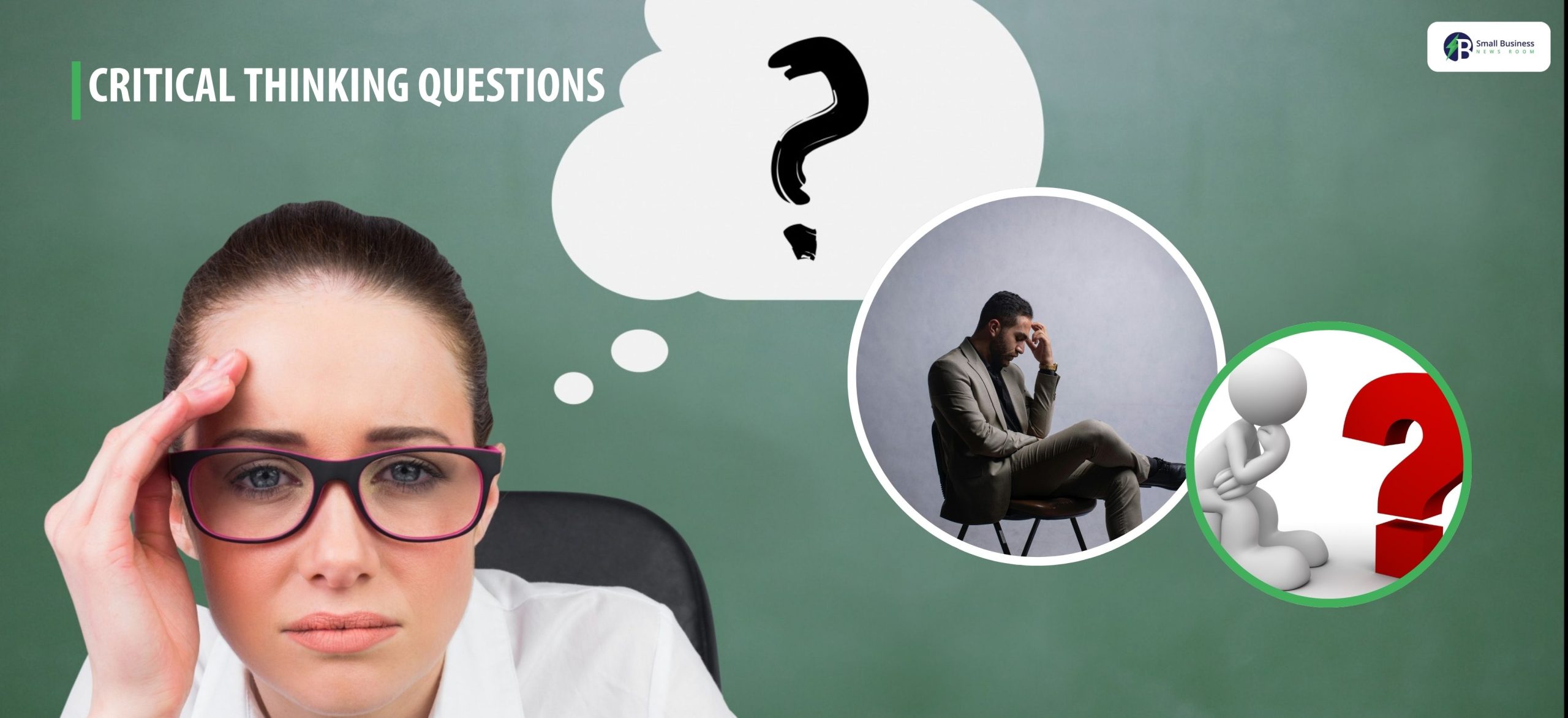Table Of Contents
- Why Critical Thinking Still Matters?
- What Are The Essentials Of Critical Thinking?
- Various Grade Levels Of Critical Thinking Questions
- How to Develop and Adapt Critical Thinking Questions
- How Can You Apply Critical Thought to Everyday Life?
- Assessing and Refining Effective Critical Thinking
- Creating a Culture of Critical Thinking
- What Are The Issues And Challenges Of Critical Thinking?
- What Are The Tools And Resources That Can Help You Get Going?
- Frequently Asked Questions
Critical Thinking Questions: The Keys To Wiser And Profound Thinking
We live in an informational, opinion-based, and instantaneous answers world. We spend each day scrolling through social media, checking the newspaper, and making thousands of decisions, both big and little.
How often, though, do we take the time to question what catches our eyes or ears? That’s where the power of critical thinking comes into play.
They make us stop and think, consider matters objectively, and make informed decisions rather than acting on impulse.
Critical thinking isn’t knowing facts; it’s knowing how to make facts useful. In the era of misinformation, the power of artificial intelligence, and rapidly altering technology, this ability has never been so crucial.
Why Critical Thinking Still Matters?

It’s tempting to believe you have to be learned or clever to be able to think critically, but this isn’t the case.
Most people blend and mingle ordinary thinking and critical thinking. Genuine critical thinking entails
- questioning assumptions,
- recognising bias,
- and open-mindedly revising your opinion where the evidence requires it.
We are all living among noise, half-truths, passionate perspectives, and headline-grabbing titles.
We risk believing things just because they are presented well without critical thinking. Asking essential thinking questions helps dig beyond superficial reactions to uncover what lies beneath the surface.
In this blog, I will discuss the nature of critical thinking, how to craft proper questions, and how to use them in your everyday life.
Together, we will take a look at how, from schools to offices, and even when you are interacting with technology such as AI.
What Are The Essentials Of Critical Thinking?

Critical thinking goes back to the earliest beginnings of philosophy. These early thinkers, including Socrates, Plato, and Aristotle, all believed that truth could only be reached through questioning.
Socrates famously utilized the method of dialogue to question assumptions and lead his students toward increased understanding, a technique that is still used today.
Moreover, contemporary models are an extension of the above concepts. Perhaps the most popular comes from Dr. Richard Paul and Dr. Linda Elder, who have come up with the “Elements of Thought” model.
They proposed that all reasoning involves purpose, questions, information, interpretation, assumptions, and points of view. To think well, we must also raise intellectual standards like clarity, accuracy, logic, and fairness.
Critical thinking, though, is not only a capacity but also a habit. Those individuals who are critical thinkers are
- Open
- Curious, and
- Humble-minded.
They are not prone to making assumptions, and they have no qualms admitting they are incorrect.
Cognitive science is an additional level of this insight. Our minds make rapid judgments through shortcuts, or cognitive biases. These are capable of warping our thinking without us even noticing. Identifying them is the beginning of the path towards better thinking.
Various Grade Levels Of Critical Thinking Questions

Not all questions are of the same quality. Some of the questions just test facts, and some test long-held assumptions. To grasp this, just consider the case of the simple series.
Below are the fact questions, which are meant to make us clearer about what we already know. For example
- “What does this term refer to?”
- “What evidence exists for this statement?”
Next are analytical questions, which probe for cause and connection. You would say,
- “Why did this occur?”
- “What am I observing for patterns?”
After that, we have inferential questions, which encourage prediction or hypothesis.
- “What might happen if this continues?”
- “What could explain this situation?”
And then there are judgment questions, where the questioner wants us to render judgment.
- “Is this argument convincing?”
- “How trustworthy is this source?”
The metacognitive questions are our own.
- “What am I assuming?”
- “How would my own beliefs affect my judgment?”
Such critical thinking questions can be framed for any discipline. A scientist may ask what evidence proves a theory, while a reporter would ask who benefits from the story.
Moreover, a corporate leader may ask what risks are overlooked. The idea is that each good question spawns another, and so the curiosity chain gets us closer and closer to reality.
How to Develop and Adapt Critical Thinking Questions
Question construction is both an art and a science. Good questions are open-ended-they encourage exploration, not the giving of simple yes/no answers.
For instance, where the question would be “Is this idea correct?”, you are better off posing the question “Why might this idea be correct or incorrect?”.
It’s also required to make questions specific to the audience. You would use everyday examples and simple language with children, but you would ask strategic or problem-solving questions of a business consultant.
It’s all about engaging people where they are and bringing them to higher levels of thought incrementally.
Good questioning frequently takes the form of something called scaffolding. You begin with basic comprehension and build toward interpretation, evaluation, and reflection.
You think of it as constructing the ladder. Your question gets you just one step higher. It is just as crucial to avoid traps.
Certain questions are too broad or too personal to be of any help. Others are potentially leading questions, which nudge respondents toward the desired reply. An effective question should expand the mind, not trap it.
How Can You Apply Critical Thought to Everyday Life?

Critical thinking should not remain limited to textbook concepts. It becomes most influential when practiced on real scenarios.
Firstly, teaching can adopt the Socratic method! This is a form of communication where students pose critical thinking questions and engage in critical thinking, learning the answers rather than by rote. Questioning,
- “How else would we be able to view this challenge?”
- “Why do you think the solution proposed yields results?”
These methods make the class learn not only by rote but also by discovery.
Secondly, critical thinking is also required within the workplace. Teams are frequently under stress of having to act now, but pausing to pose insightful questions helps to avoid costly errors.
At meetings, brief questions of the type
- “What evidence does this proposal rest upon?”
- “What are the risks of proceeding?”
This fosters balanced decision-making and guards against future groupthink.
Thirdly, critical thinking questions are our best bulwarks against misinformation in our virtual lives. Stop and think, as you browse the web:
- “Who put this stuff together?”
- “Why was it put together?”
- “Who has evidence to the contrary?”
These little habits of curiosity render us less vulnerable to manipulation.
Fourthly, even while communicating through technological products, critical thinking does not go out the window. Asking,
- “Where did this information come from?”
- “What data might the AI be ignoring?”
This further promotes responsible use of technology.
Assessing and Refining Effective Critical Thinking
What gets measured gets improved. Measures of critical thinking reveal where you are and how you can develop.
In schools or the workplace, tests may be formative, yielding feedback along the way, or summative, checking learning after a task. Self-evaluation is another strong type of test; it allows individuals to assess their own thinking.
Most instructors are using rubrics to assess values such as
- Clarity,
- Accuracy,
- Depth,
- Relevance.
Other commercially available tests, such as the California Critical Thinking Skills Test or the Watson-Glaser Appraisal, are equally popular.
But of all these, reflection and feedback are most essential. If you define your thinking and receive thoughtful feedback, you learn patterns in your thought processes.
Writing a journal or “thinking log” is an informal but excellent way to note long-term progress.
Creating a Culture of Critical Thinking

Individual abilities are only useful so long as the culture reinforces them. A genuine culture of critical thinking promotes open discussion, diversity of opinion, and constructive disagreement. It’s all about creating spaces where challenge is not met with defiance but with inquiry.
It needs patience and humility. Individuals should be comfortable saying they do not know or that they may be incorrect.
These institutions, communities, businesses, or schools have their role by rewarding considered inquiry and not blind agreement.
Moreover, with time, habits of reflective journaling, of mindfulness, and of frequent reading serve to buttress this mindset.
Furthermore, they help us remember that the ability to think critically is not something accomplished once but is an ordinary part of life, requiring constant growth.
What Are The Issues And Challenges Of Critical Thinking?

Though invaluable, critical thinking has numerous challenges today. Cognitive biases still obscure judgment. Emotions, culture, and personal views may deflect objectivity.
Furthermore, combinations of difficulties brought by technology include algorithms presenting us with content we agree with, making balanced thinking increasingly impractical.
Moreover, Artificial intelligence also raises the question of truth and trust. With the increasingly realistic text, imagery, and even footage produced by the software’s growing power, there is a greater need for human critical thinking.
We must not only learn how to question others, but also question those of our own machines.
Critical thinking of the future involves the ability to adapt to complexity, recognize the reality that all problems have only one solution, and sometimes the best solution is a better question.
What Are The Tools And Resources That Can Help You Get Going?
To develop your ability to think critically, start humbly. Read books like Thinking, Fast and Slow by Daniel Kahneman or The Miniature Guide to Critical Thinking by Paul and Elder.
Explore the internet resources like CriticalThinking.org or MindTools for routines and templates.
First and foremost, practice each day. When you come upon new information, take the time to ask yourself:
- Is this trustworthy?
- What am I most likely to be missing?
The more you question, the clearer your thinking gets.
Frequently Asked Questions
Critical thinking is more like an ability to analyze information objectively. This further helped in making a reasoned judgement. It is highly necessary to enable individuals to:
1. Solve problems effectively
2. Evaluate all the arguments
3. Make informed decisions
To improve your critical thinking skills, you can follow these:
• You can ask questions
• Consider multiple perspectives
• Try to evaluate all the evidence and sources
• Reflect on your reasoning
• Must practice regularly through reading, writing, and discussion
Being critical means you have to find the fault. Critical thinking mainly involves constructive analysis.
This is not just criticism; this is more about understanding, questioning, and evaluating with fairness and depth.
Yes, critical thinking can be easily taught as well as developed through consistent practice, education, and real-world application.
It can absolutely be taught and developed through consistent practice, education, and real-world application.
The bias can easily cloud judgments, which can lead to flawed reasoning. So, for better objective analysis, you need to recognise personal and external bias.














